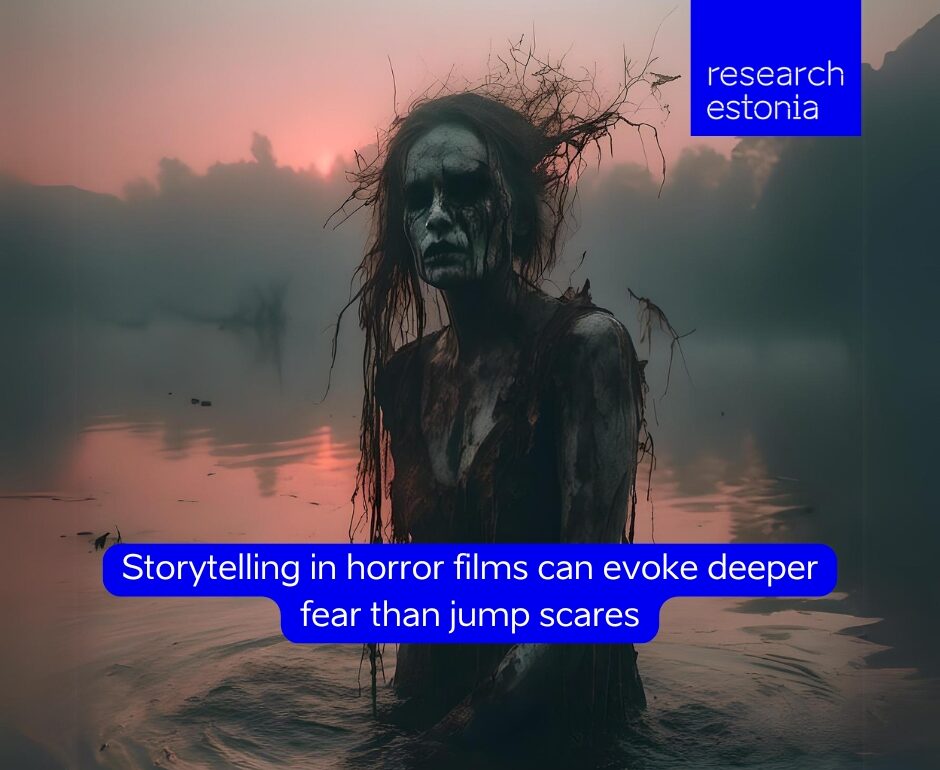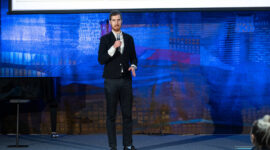Horror films are known for having terrifying images and sudden noises, but there are other ways to scare the audience. Film researchers are investigating the emotional effect of scenes where characters narrate stories; a strategy that may prove even more effective than visuals.
Throughout history, humans have orally shared stories around campfires, including scary legends and cautionary tales. As a modern evolution of such stories, the horror film focuses on showing these narratives visually. Yet, a number of horror films and thrillers have scenes where characters tell each other stories. In these scenes, the audience listens to a character and is invited to imagine the narrated event as they hear it.
For example, in Steven Spielberg’s Jaws, released in 1975, an old sailor describes his first encounter with deadly sharks in an attention grabbing verbal report. The presence of these scenes shows that film audiences are not just interested in seeing scary images on the screen, but also visualizing them in their own imagination.
While these verbal retelling scenes are promising, understanding their impact is not a simple task. Horror is subjective and film audiences are scared by different things: a jump-scare scene startles the viewer whereas an oral description of events causes tension, apprehension or dread. These emotions are not the same, though they are often placed in the general “fear” category. This poses a challenge to scientific studies of horror films: how can researchers measure and distinguish emotional response to a scary scene?

The work I have been developing at Tallinn University BFM focuses on designing an experiment to understand what kind of feelings do descriptions in oral narration scenes invoke in the audience. I also compare the emotional effect of visually-oriented scenes, the usual scary monster jumping from a dark corner, to that of verbal narrations like in Jaws.
One of the advantages of studying fear in horror films is that it is easily measured: when viewers watch a scary scene, their hearts accelerate, they get goosebumps, sweat or shiver. Film researchers have devised measuring tools that detect skin fluctuations and heart rate to determine how distressed a viewer is while watching a horror scene.
In addition, a new approach in the field called neurocinematics has sprung up. Using neuroscience equipment such as fMRI and electroencephalogram machines it gives researchers a chance to track what happens in the brain when watching films. These methods allow us to collect neurological and physiological data potentially providing answers to the question posed above.
But one method of data collection is not enough. While heart rate intensity indicates that a viewer is stressed while watching, it lacks nuance and finer details. To understand the complex emotions of an audience, we need to ask additional questions. The study I have been developing includes interviews with participants where they further describe how they felt during the scenes. Using a triangulation method, we combine their accounts with the physiological data collected and analysis of film scenes, providing more reliable results.
One disadvantage of this experiment is that it’s limited to scenes: it is much harder to assess emotional impact in a whole feature film. Another issue is how to account for different kinds of viewers: some participants may be casual horror watchers while others are hard-core fans. Thus, the same scene might have very different impacts to these two groups in terms of magnitude of the fear effect. Researchers have methods to counterbalance these shortcomings, but it is important to acknowledge that emotions in general are a very complex topic in scientific studies and fear is no different.
Despite the challenges, this research shows great potential to demonstrate how effective and valuable these scenes can be to practitioners and audiences alike. Horror filmmakers usually have small budgets and practical limitations to create their films. Audiences, tired of cheap jump scares, are constantly looking for unique and meaningful ways to be scared. The verbal narration scenes are answers to both demands. If we can demonstrate how effective these scenes are, a brand new world will open up for horror storytelling in film.
Author of this article is Larissa Barbosa Curi. Editor Jaan-Juhan Oidermaa.
Article written for the contest “Science in 3 minutes” organised by Estonian Academy of Sciences and The Estonian Young Academy of Sciences (EYAS). Main sponsor of the competition is Inclusive Financial Technology Foundation.
If this cinematic deep dive has you on the edge of your seat, roll the credits and cue up our next article for more behind-the-scenes magic of movie-making! Read more about how Making an interactive film enabled an exploration of the tensions between following or resisting storytelling conventions!
 Back
Back



